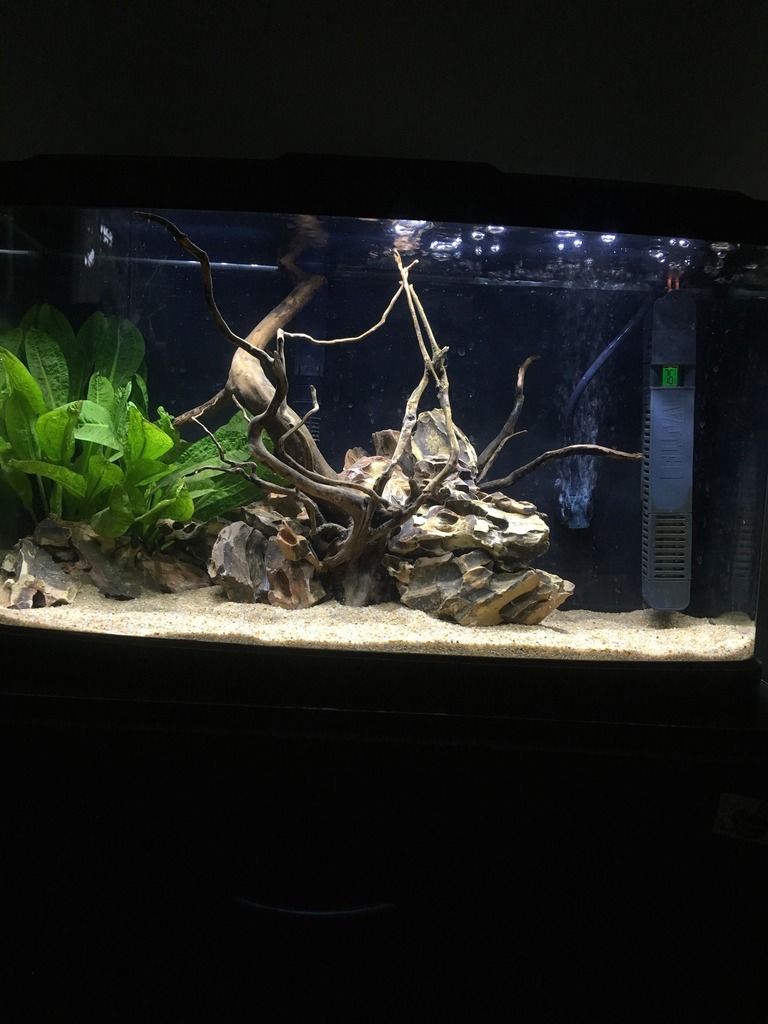1. Water parameters
a) Temperature range: 72-78
b) pH: 7.2
c) GH: 6 dH
d) KH: 4 dH
e) Conductivity or TDS (if GH and KH aren't provided): approximately 219 ppm
f) Ammonia, Nitrate, Nitrite levels (Most LFS's will check your water and give a list of readings): Ammonia=0; Nitrate=0; Nitrate=5-10
g) Water change frequency: approximately 25% every week
h) "Routine" water treatments (e.g, chlorine/chloramine or ammonia neutralizers; pH or hardness adjustments, anti-stress chemicals, tank-cycling bacterial mixes): I use RO water reconstituted with Equilibrium and Baking Soda to bring the water to a GH of 5-6 dH, a KH of 5 dH and TDS of about 200 ppm
2. Tank set up
a) Size: Eclipse System 12 - 12 gallon
b) Substrate: Caribsea Black Tahitian Moon Sand with an under-layment of Caribsea Eco Complete
c) Filtration: Eclipse System integrated filtration system; external Nitrate Filter
d) Furnishings: Live plants and small terra cotta pot "caves"
e) Other tank mates: Only c. similas
f) How long has it been set-up?: about one year
g) Food used and frequency: TetraMin Tropical Flakes; API Bottom Feeder sinking nuggest. Fed every morning Monday-Friday.
h) Recent changes in the tank which occurred shortly before the disease/problem appeared (if any; e.g., changes in water source or water treatment, changes in decorations or substrate, replacement or changes of hardware (filters, heaters, etc.), and additions or removals of live plants or live fish): added a marimo ball and a Cryptocoryne 2-3 months ago
3. Symptoms / Problem description or history: ragged dorsal and pectoral fins, beginning about 1-2 weeks ago.
4. Action taken (if any): started adding Melafix and Pemafix 4 days ago.
5. Medications used (if any) / changes in fish observed since treatment began (if any): Melafix and Pemafix. No change. In fact, the condition appears to be progressing.
I try very hard to keep my water parameters at healthy levels and stable. I don't know what I'm doing wrong. Please. Any advice is welcomed. I hate to see them like this.







